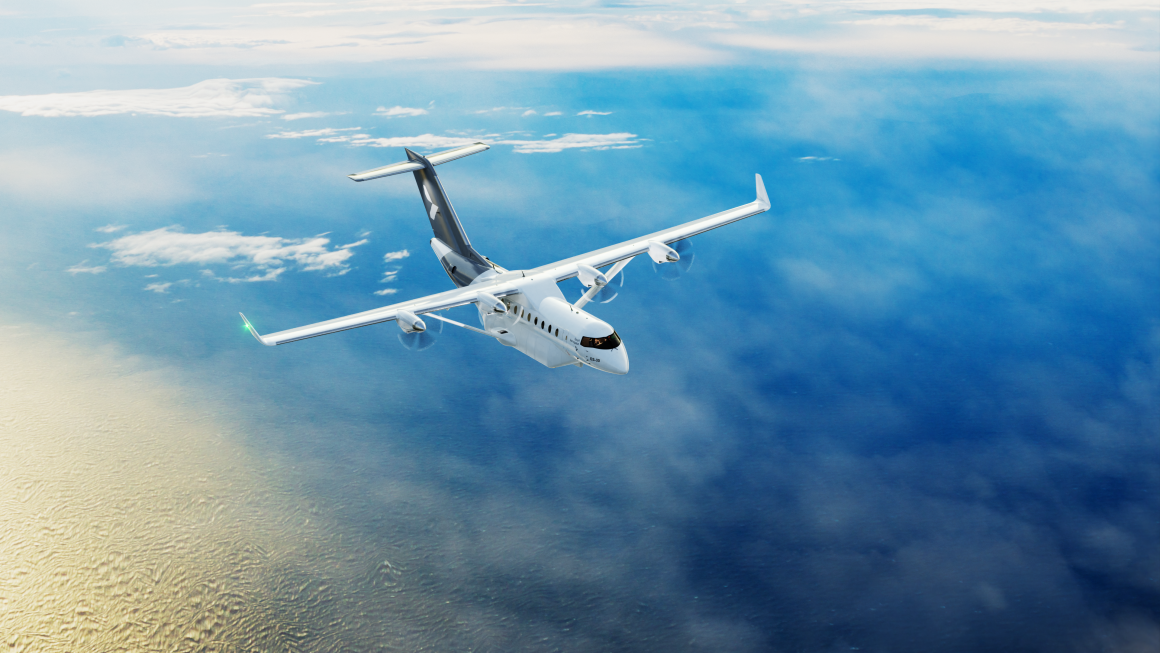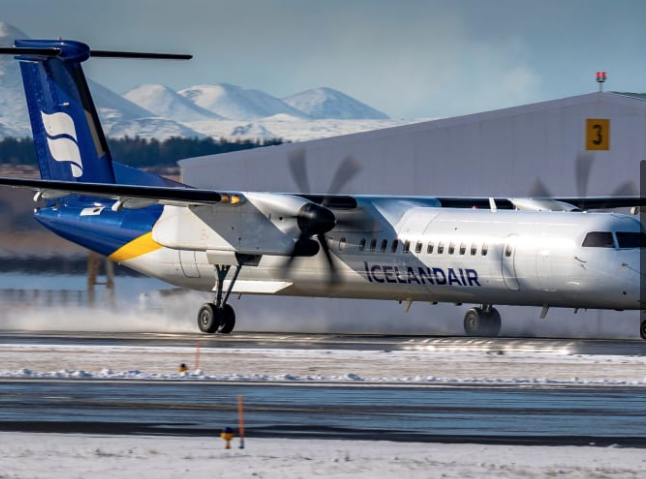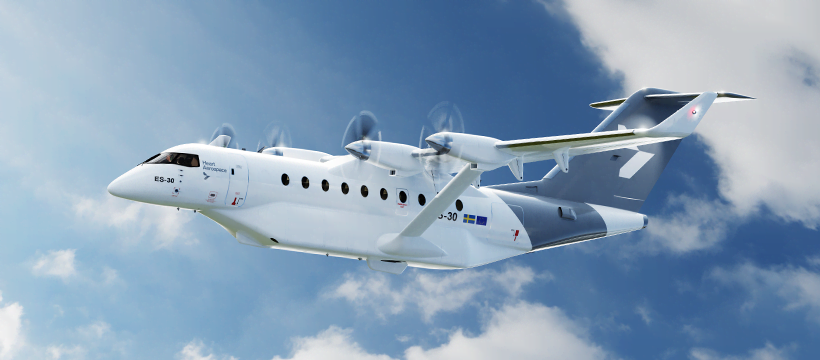Icelandair is on track to become the world’s first national flag carrier to operate a 100 percent carbon-free domestic network.
The carrier aims to complete the transition by 2030, according to Icelandair CEO Bogi Nils Bogason.
Icelandair Eyes the Heart Aerospace ES-30

Bogason acknowledges uncertainty over whether future carbon-free aircraft will be electric or hydrogen-powered. However, he believes the transition is completely possible.
“We firmly believe it’s realistic that we will be operating a carbon-emission-free aircraft in our domestic operations before the end of this decade,” Bogason told the Financial Times last week. “Our plans are for that, whether it will be hydrogen-powered or a partly electric-powered aircraft.”
To that end, Icelandair intends to partner with Sweden-based Heart Aerospace as it develops a 30-seat hybrid-electric aircraft – the ES-30. The ES-30 will feature battery-powered electric motors and a backup conventional engine with two turbo generators powered by sustainable aviation fuel (SAF).
Get one weekly email with out top stories. No spam, we promise!
The ES-30 will have a zero-emissions range of about 120 miles and an extended range of 250 miles with 30 passengers. It will also have an extended-range flexibility of just under 500 miles with 25 passengers.
Iceland: The Land of Fire and Ice – and Clean Energy

Icelandair Deputy COO Heida Njola Gudbrandsdottir says it makes sense for Iceland to be a pioneer in clean aviation. Nearly 100 percent of the country’s electric production comes from its vast supply of renewable energy sources such as hydropower, geothermal, and wind.
Other great stories at Avgeekery:
- The Switchblade Flying Car Does What No Other Flying Car Can, and You Can Reserve It Now
- Northwest Flight 1482 and Flight 299: A Collision in the Fog That Never Should Have Happened
- Most A320s Now Fixed, But Airbus Flags New Metal Panel Issue Affecting Up To 628 Jets
- JSX ATR 42 Joins Fleet, Announces Controversial Airport as First Destination
- Why the Connecticut Air and Space Center Is One of New England’s Best Aviation Museums
“We have set ambitious goals to reduce our carbon emissions and one of the measures needed to reach these goals is participating in the development of new technology,” said Gudbrandsdottir. “With short domestic flight routes and ample access to green energy, Iceland is in a unique position to be [at] the forefront of decarbonizing domestic flight. We are very pleased to participate in this development and to help make the energy exchange of aviation a reality.”
Both battery and hydrogen-powered aircraft will likely only be viable on short trips such as the domestic routes within Iceland due to their limited energy density.
Indeed, Icelandair – which is roughly the size of Ohio – operates just three domestic routes from its hub at the capital city of Reykjavik. Unlike Icelandair’s international flights that use Keflavik International Airport (KEF) 30 miles outside of downtown, its domestic flights use Reykjavik City Airport (RKV) which is just over a mile from the city center.
From RKV, Icelandair’s fleet of five Dash-8s serve Akureyri (AEY), Egilsstaðir (EGS), and Ísafjörður (IFJ). With a distance of 237 miles, the flight between RKV and EGS is the longest, clocking in at one hour.

In addition to its partnership with Heart Aerospace, Icelandair also intends to partner with Los Angeles-based Universal Hydrogen to decarbonize its existing fleet of Dash 8s. To achieve this, Universal Hydrogen would install a hydrogen conversion kit to convert the conventional powertrain into a carbon-free system powered by green hydrogen.
Icelandair’s Goal is Net Zero Emissions by 2050

Other carriers, such as United Airlines, Air Canada, US start-up Connect Airlines, Norwegian carrier Wilderøe, and more, each intend to deploy some type of electric or hydrogen-powered aircraft on regional routes in the near future. However, Icelandair’s plans are the most ambitious. And it is presently the only national flag carrier that has announced the transition to entirely carbon-free domestic flights.
If Bogason believes his airline can achieve a carbon-free domestic operation by the end of the decade, much will have to happen between now and then. With the young industry still in the testing and development phase, electric and hydrogen-powered regional aircraft prototypes will need to become commercially viable in roughly seven years.
This may seem like a lot of work – and investment – into an industry that is responsible for just 2.1 percent of all human-induced carbon dioxide emissions. Regardless, Icelandair is taking steps the necessary steps to reduce its share of emissions. And by doing so, it hopes to show the world what is possible in the area of green aviation.
Icelandair is aiming to achieve a company-wide goal of net zero emissions by 2050.
